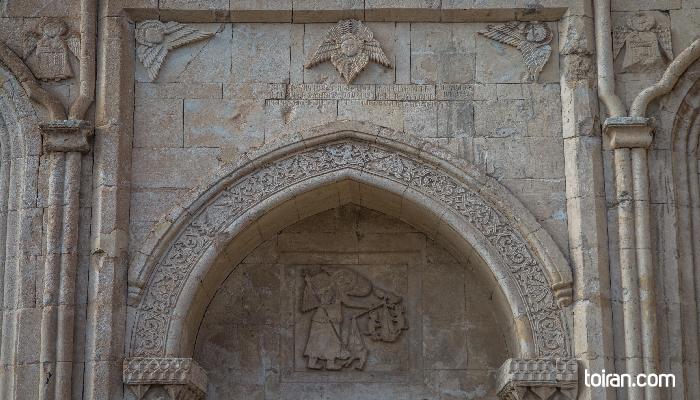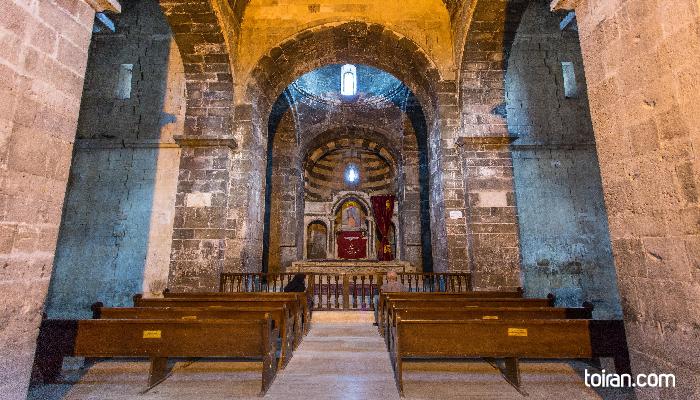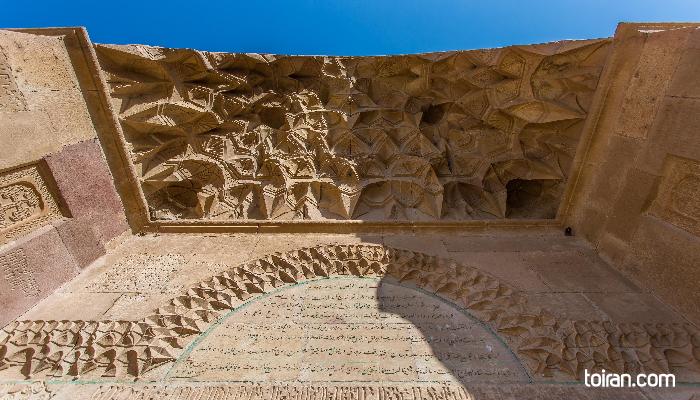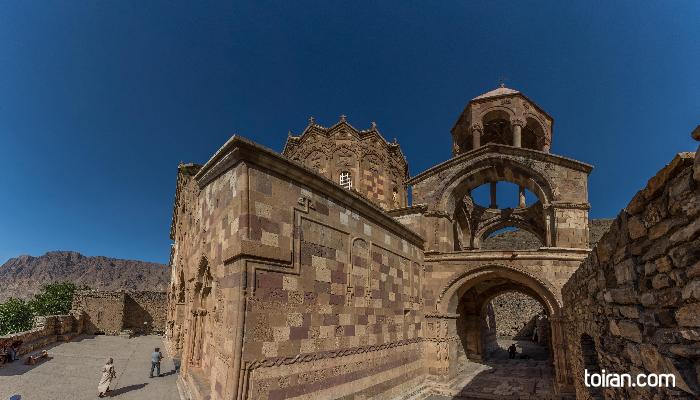Registered as a UNESCO World Heritage Site, the Armenian Monastic Ensembles of Iran consist of three churches that were built between the 7th and 14th century and are located in East and West Azarbaijan Provinces. Dzordzor Chapel, Qara Kelisa or St. Thaddeus Monastery St. Stepanos Monastery are considered important examples of the exchange between the Byzantine, Orthodox and Persian cultures.
Located south of Maku, Qara Kelisa or the Black Church is the first of the three churches. The name of church comes from the black stones used in parts of the its structure although some say it means Grand Church.
Qara Kelisa is also known as the St. Thaddeus Monastery and is reputed to have been built by St. Jude (Thaddaeus), one of the 12 apostles, in 68 CE. Armenians believe it is the world’s first church. Experts, however, say that Qara Kelisa was built in the 7th century in honor of St. Jude.
One of the most decorated Armenian structures in Iran, Qara Kelisa has two conical domes and stone reliefs on its walls and bell tower. Qara Kelisa was seriously damaged in 1230 during the Mongol invasion. It was devastated in a 1319 earthquake and rebuilt in 1329. Qara Kelisa is a pilgrimage site revered by Armenians.
Dzordzor Chapel is the second of the three churches. Located 12 kilometers northwest of Qara Kelisa, the chapel is believed to have been built between 1315 to 1324 on the banks of the River Zangmar. The chapel has a plan resembling a crucifix and has been built using loose stones of different shapes and sizes. The chapel has a conical dome with 16 ribs and four lightwells. There are also four lightwells in the walls of the chapel. Dzordzor Chapel was rescued from the rising waters of the Baroon Dam by disassembling and reassembling it higher up on a nearby gorge.
St. Stepanos Monastery, the last of the Armenian ensembles, is situated in a deep canyon along the Aras River on the Iranian side of the border between the Republic of Azerbaijan and Iran. The monastery was built in honor of St. Stepanos who was stoned to death in Jerusalem in 36 CE. While some believe the structure was built by early Christians, the first mention of St. Stepanos Monastery was in 7th century records.
The walls, dome, pillars and bell tower of St. Stepanos are made of white and pink hand-masoned stone. The dome of the structure has 16 ribs and sits on four massive stone pillars. Floral and bird motifs have been hand painted around the windows, under the dome, on the walls and on the pillars of the church. St. Stepanos briefly fell into ruin in the 17th century but was rebuilt by the Safavids (1501–1736).








